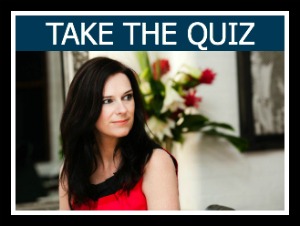Who wants to be present in the moment?
 Being present in the moment is something that I've heard bantered around so much lately. Interestingly I even had a riding lesson on it, with the wonderful Cindy at CW Western Training. Anyway, with the concept sunk in, it got me thinking. How often have I eaten a meal and not really tasted it, chatted with my kids without actually hearing them, got from A to B without knowing how, or completed a project without really thinking about it? The answer is far too many times! More often that not my days pass me by whilst my mind is elsewhere. How sad! And, having spoken to others about this, I know I'm not alone. As a generalisation we all spend far too much time thinking about what was and what could have been, and on projecting into the future and wondering about what may happen.
Being present in the moment is something that I've heard bantered around so much lately. Interestingly I even had a riding lesson on it, with the wonderful Cindy at CW Western Training. Anyway, with the concept sunk in, it got me thinking. How often have I eaten a meal and not really tasted it, chatted with my kids without actually hearing them, got from A to B without knowing how, or completed a project without really thinking about it? The answer is far too many times! More often that not my days pass me by whilst my mind is elsewhere. How sad! And, having spoken to others about this, I know I'm not alone. As a generalisation we all spend far too much time thinking about what was and what could have been, and on projecting into the future and wondering about what may happen.
Whilst no one can actually live in the moment all the time, some people, with practice, can learn to live in the moment for longer periods than others. By doing this, it enables us to stop being miserable by worrying about the future or even thinking about the past. It enables us to live as much as we can in the only moment that we'll only ever really live in, and control. The moment is right now and it is all there ever is, was and probably ever will be.
So here's what I've learnt about living in the moment. When you live in the moment you'll benefit from:
- Clarity: You'll have much better focus, and creativity will come more naturally.
- Calmness: You'll feel centred, relaxed and whatever you do will come more easily. Because you're not projecting into a possible future or reflecting on a previous experience there will be little fear holding you back.
- Positivity: Since there's little fear, there'll be fewer negative emotions when you're in the present. You'll move around on positive part of the emotional scale.
Being present in the moment and how to do it
1. Focus on what’s right in front of you, around you, or on you. Use your senses – feel – smell – hear – taste! Just look at what’s right in front of you right now. Listen to the sounds around you. Feel the fabric of your clothes. Smell the snow on its way and taste the rain as it falls on your tongue! Leave behind previous experiences. You come to the moment fresh, as if for the first time.
2. Focus on your breathing. Practice deep breathing and focus your mind on your inhaling and exhaling. This will align you with the present moment once again.
3. Focus on your inner body. This is a bit similar to focusing on your breathing. In both examples focus on what’s inside you rather than the outside.
4. Pick up the vibe from present people. If you know someone who's more present in the moment than others then access his/her vibe of presence. It's a similar experience to picking up positivity or enthusiasm. If you don’t know someone like that then watch DVDs by Eckhart Tolle. Whilst his books and MP3s are great, DVDs are the best medium as the biggest part of communication is voice tonality and body language.
5. Surrender to the emotion that's already there. It’s easy to get stuck in the past. Even if you want to move away from those memories there's a feeling there that brings them back over and over. The only way to reduce the power that feeling has over you is by surrendering to it. When you accept the feeling, surrender and let it in, you literally stop feeding it energy and it vanishes.
What are your thoughts? Are you guilty like me of not being present in the moment for much of the time or have you found a way to accomplish this? If you practice living in the moment, what was your wake up call or how did you come to do this? Please share your experiences and feedback in the comments below as I’d love to hear. Finally, thank you, as always for reading and contributing here. If you found this useful, please share it with your friends!
With love and gratitude – as always,











Follow Us